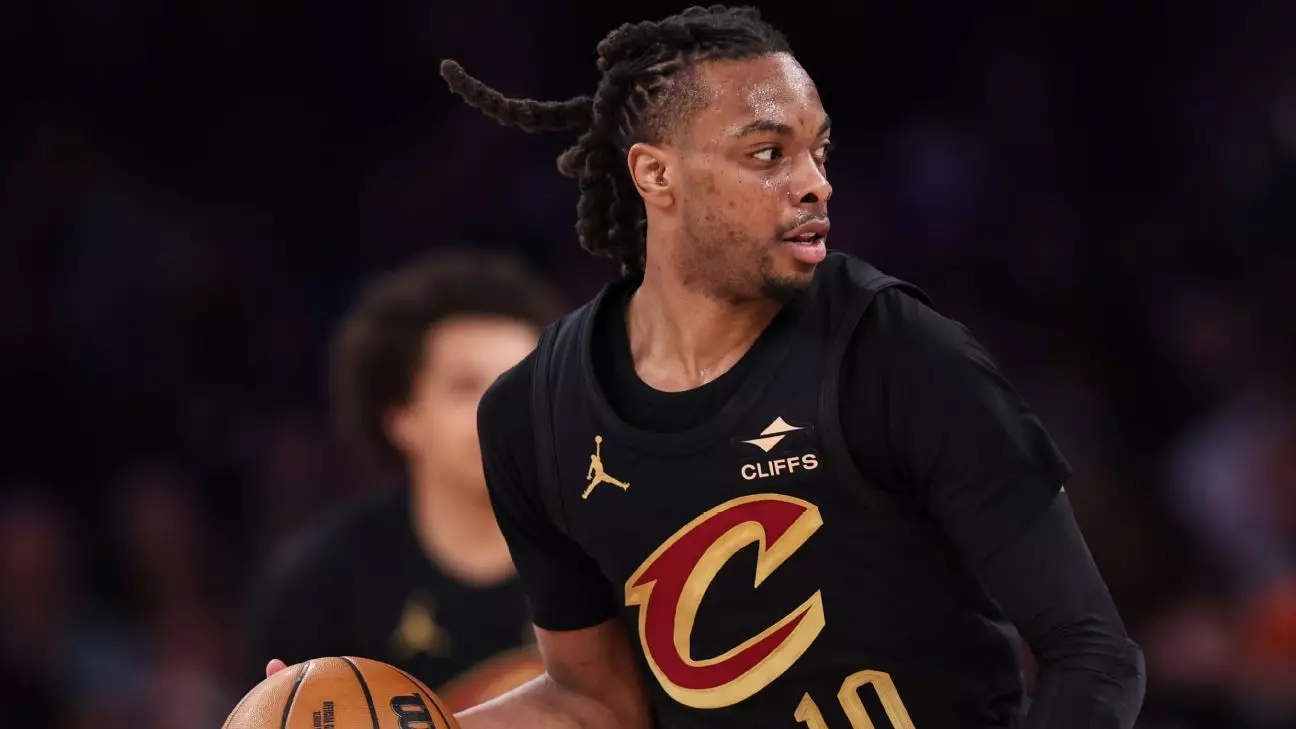As the Cleveland Cavaliers prepare for their pivotal showdown with the Indiana Pacers in the Eastern Conference semifinals, the health of star guard Darius Garland looms as a significant concern. Listed as questionable due to a sprained left big toe, Garland’s ability to contribute meaningfully in this crucial phase of the playoffs is under serious scrutiny. This injury, which has already sidelined him for critical games in both the regular season and first playoff round, poses questions about its long-term implications on the Cavs’ championship aspirations.
Garland’s injury is particularly troubling not only due to its timing but also because of the nature of toe injuries. These injuries can be notoriously unpredictable, often resulting in lingering effects that can hinder an athlete’s performance. With the basketball playoffs being a grueling test of physical stamina and skill, the limitations imposed by such a sprain could falter Garland’s explosive movements and shooting accuracy—central elements of his game. The fact that he missed practice following a full-contact session adds another layer of concern for fans and analysts alike.
A Game-Time Decision That Weighs Heavily
Cavaliers’ head coach Kenny Atkinson remains optimistic yet pragmatic about Garland’s status. The recognition that his player’s performance will inevitably be influenced by daily fluctuations in pain and mobility reflects the uncertainty that permeates team strategies this late in the season. “It’s a game-time decision” has become an all-too-familiar refrain across professional sports, but in Garland’s case, it encapsulates the precarious balance between urgency and prudence.
The Cavaliers swept the Miami Heat convincingly, showcasing their depth and resilience, yet the absence of a player like Garland is stark. Averaging 20.6 points and 6.7 assists during the regular season—figures that make him the linchpin of Cleveland’s offensive strategy—his effectiveness cannot be easily replicated. While backup guards step into starting roles, their ability to fill Garland’s shoes remains an open-ended question and shifts the team dynamics significantly.
The Psychological Toll of Injury
One cannot underestimate the psychological burden that injuries impose on athletes, especially during the playoffs. The pressure to perform while dealing with physical limitations can lead to a steep mental struggle. For a young star like Garland, the desire to help his team advance deep into the playoffs surely competes with the instinct to avoid re-injury. This internal conflict can create performance anxiety that may be just as impactful as the physical ailment itself.
Additionally, the support system surrounding Garland, from coaches to fellow players, will play a crucial role in his recovery and performance if he can take to the court. The camaraderie of the team could either reinforce his confidence or inadvertently amplify his fears of failing to live up to expectations while operating at partial capacity.
Overall, Darius Garland stands at a critical juncture in both his career and the Cleveland Cavaliers’ playoff journey. The ramifications of his foot injury extend beyond mere statistics; they encase a broader narrative of perseverance, strategic decision-making, and the ever-present dance with competitive fate. As the game unfolds, fans will keenly watch how the organization builds its approach around the unpredictable nature of their star guard’s involvement.

